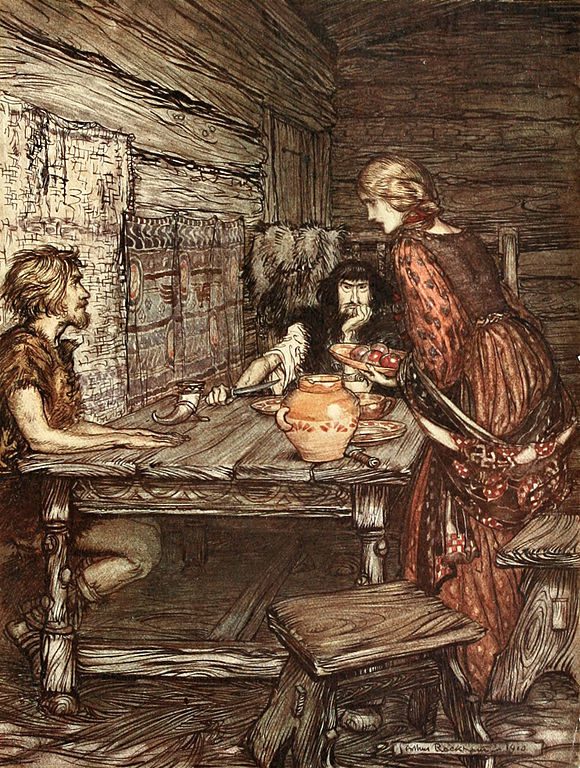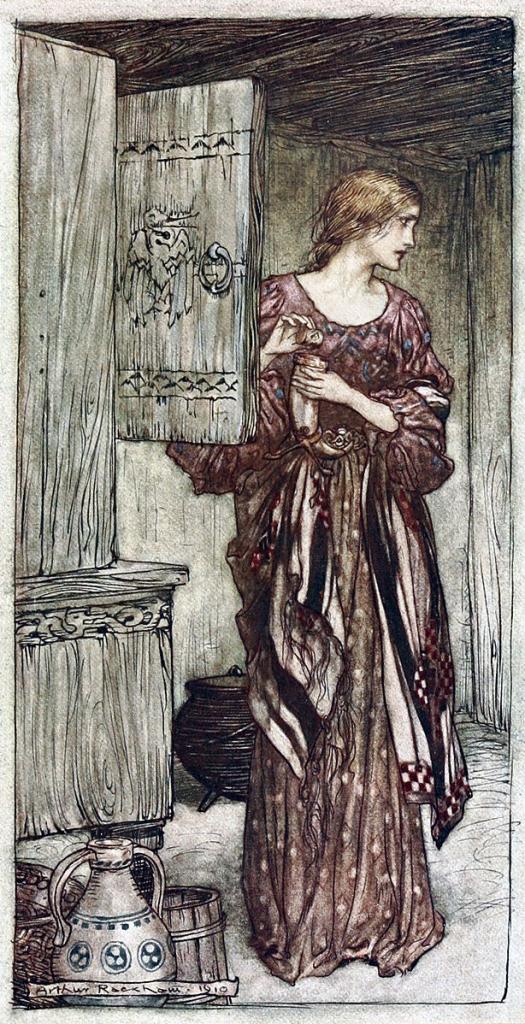
Wikimedia Commons public domain
Rather a Germanish day today (Saturday). Also a good day to be inside — dark and windy and rainy.
My wife and I went out to lunch with a long-time friend — I knew him at BYU before my mission; he was called to the same mission as I was (though he spent most of his time in Lebanon rather than in Switzerland), and he was the best man at our wedding — at The Berghoff. That’s something of a tradition whenever we’re here; he introduced me to the restaurant, many years ago . All three of us had Wienerschnitzel. (After all, what else were we supposed to have? Tradition!)

Then my wife and I attended a performance — four hours and forty-five minutes long, counting two thirty-minute intermissions — of Die Walküre (The Valkyrie) at the Lyric Opera of Chicago. It is, of course, the second opera in Richard Wagner’s four-part cycle, Der Ring des Nibelungen (The Ring of the Nibelung).
The principal performers were Brandon Jovanovich (Siegmund), Elisabet Strid (Sieglinde), Ain Anger (Hunding), Eric Owens (Wotan), Christine Goerke (Brünnhilde), and Tanja Ariane Baumgartner (Fricka). The conductor was Sir Andrew Davis.
There were a few aspects of the production for which I didn’t much care: For example, the place where Brünnhilde and her Valkyrie-sisters had their “headquarters” — and where they gathered the souls of heroic fallen warriors — resembled a butcher shop. All of the Valkyries (except Brünnhilde) were dressed in red, and their assistants were wearing bloody butchers’ aprons. A bit much, I thought. And not really consistent with the nature and tasks of the “real” Valkyries. But, overwhelmingly, it was a very good performance.
I saw the entire Ring cycle at the San Francisco Opera back in 1990, when I spent a summer at a seminar sponsored by the National Endowment for the Humanities at the Graduate Theological Union in Berkeley. My wife and kids weren’t with me for most of that time, so she missed it. Which is why, now that they’re slowly doing the Ring here in Chicago, we’re attending. Last year, at roughly this time, we saw Das Rheingold. Next year, if all goes well, we’ll be back for Siegfried.

I was surprised to find myself rather moved by the final act of tonight’s opera. It’s been more than a quarter of a century, of course, but I don’t remember reacting that way in San Francisco. Maybe I’m just getting old and sentimental. I also found myself thinking theologically, as I watched the interaction between Wotan and Brünnhilde (the Valkyrie). Perhaps I’ll write those thoughts up at some point.
Posted from Chicago, Illinois











